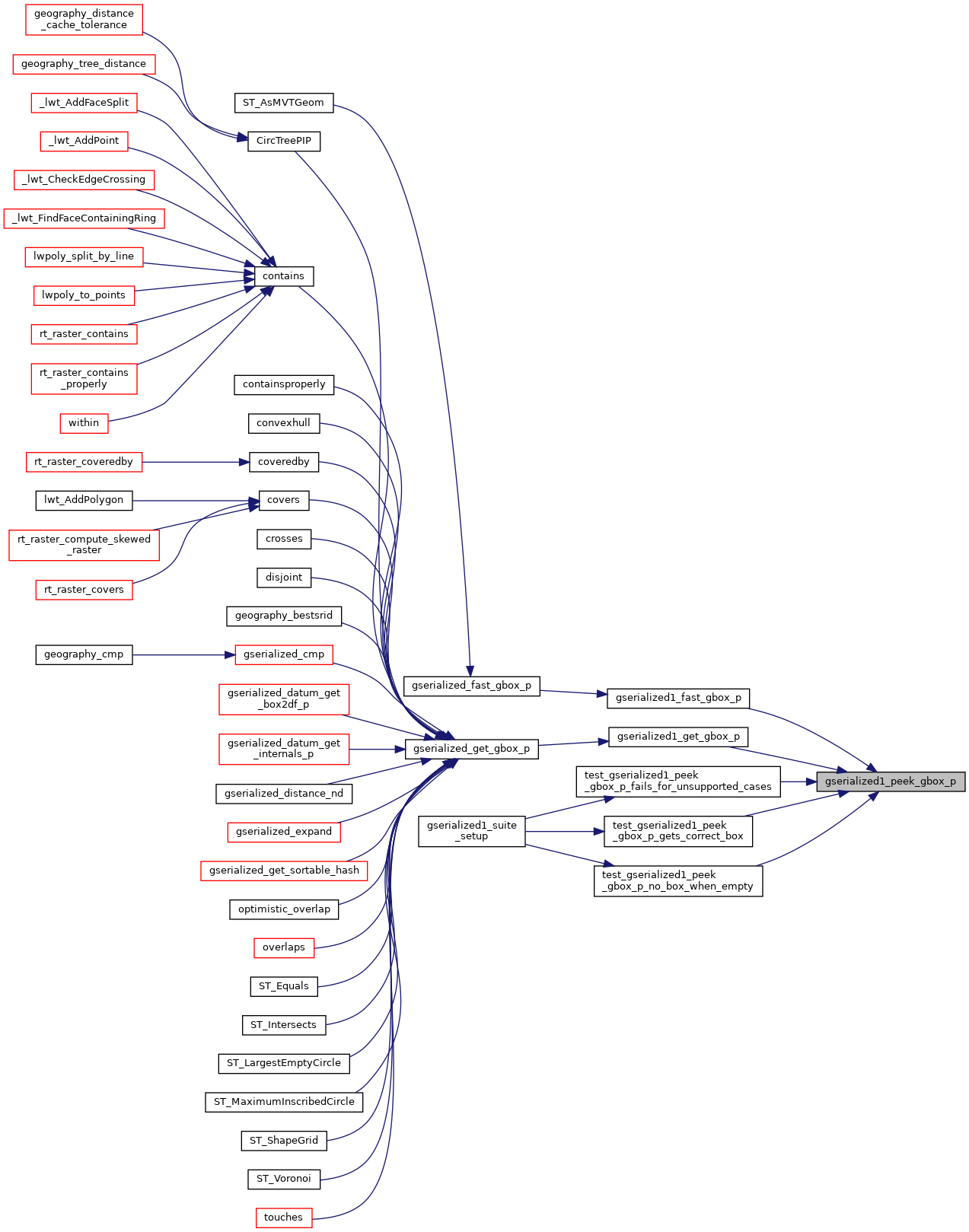◆ gserialized1_peek_gbox_p()
| int gserialized1_peek_gbox_p | ( | const GSERIALIZED * | g, |
| GBOX * | gbox | ||
| ) |
Definition at line 299 of file gserialized1.c.
lwflags_t gserialized1_get_lwflags(const GSERIALIZED *g)
Read the flags from a GSERIALIZED and return a standard lwflag integer.
Definition: gserialized1.c:41
uint32_t gserialized1_get_type(const GSERIALIZED *g)
Extract the geometry type from the serialized form (it hides in the anonymous data area,...
Definition: gserialized1.c:132
References GSERIALIZED::data, GBOX::flags, FP_MAX, FP_MIN, G1FLAGS_GET_BBOX, G1FLAGS_GET_GEODETIC, G1FLAGS_GET_M, G1FLAGS_GET_Z, G1FLAGS_NDIMS, gbox_float_round(), GSERIALIZED::gflags, gserialized1_get_lwflags(), gserialized1_get_type(), LINETYPE, LW_FAILURE, LW_SUCCESS, GBOX::mmax, GBOX::mmin, MULTILINETYPE, MULTIPOINTTYPE, POINTTYPE, ovdump::type, GBOX::xmax, GBOX::xmin, GBOX::ymax, GBOX::ymin, GBOX::zmax, and GBOX::zmin.
Referenced by gserialized1_fast_gbox_p(), gserialized1_get_gbox_p(), test_gserialized1_peek_gbox_p_fails_for_unsupported_cases(), test_gserialized1_peek_gbox_p_gets_correct_box(), and test_gserialized1_peek_gbox_p_no_box_when_empty().
Here is the call graph for this function:

Here is the caller graph for this function:
